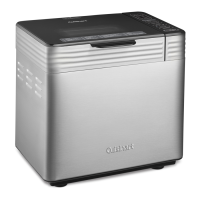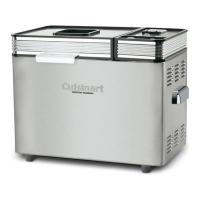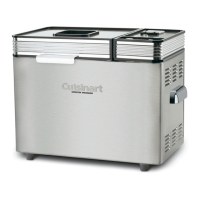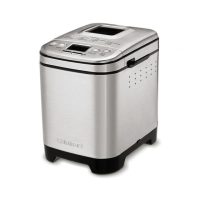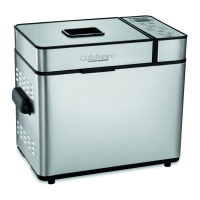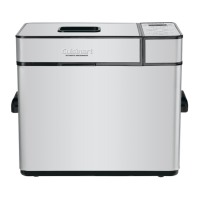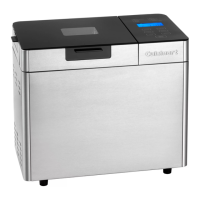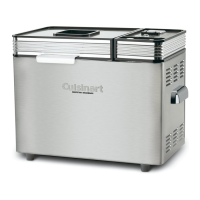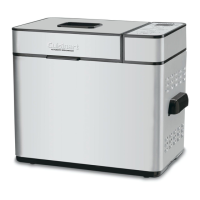14 15
BREAD MAKER PANTRY
STORING INGREDIENTS
Flours and other bread-making ingredients are prone to rancidity and should be stored properly. Buy them
in smaller quantities and purchase as needed. Always mark the date the ingredient was opened on the bag
or containers so you can keep track. Freezers can often impart off flavours, so be sure containers are well
sealed.
White Flours (all-purpose and bread):
These should be stored in a dark, cool place for up to 1 year (but best to go by the use-by date on the bag). These
can also be put in the freezer for a year as well, but be sure to wrap well so they do not pick up any flavours or
odours from the freezer.
Whole-Grain and Most Gluten-Free Flours:
Store in a cool, dark place for up to 3 months, or in the freezer for up to 6 months.
Nut Flours:
These are very prone to spoiling, so store in the refrigerator for up to 3 months or in the freezer for up to
6 months.
Starches and Gums:
More stable than flours, these can be stored in a cool, dark place for at least a year.
Yeast:
Always store in the back of the freezer or refrigerator. Typically, well-stored instant yeast remains usable for
up to 2 years. Check the expiration date prior to using.
COMMON BREAD MAKING INGREDIENTS
All-Purpose Flour:
Can be bleached or unbleached (we prefer unbleached). For the bread machine, all-purpose flour is used for
most yeast and cake quick breads.
Bread Flour:
An unbleached flour high in protein and gluten. This is best for artisan-style breads. This flour can be used as a
substitute for all-purpose flour and will give the baked bread more volume.
Eggs:
Add taste, richness, and colour to breads. They act as emulsifiers and aid in keeping breads fresh and moist.
They also work as a leavener and help with the volume of the bread. Do not use with Delay Start feature
unless using powdered egg or powdered egg white and adding with flour. All recipes included use large eggs.
Fats (assorted):
Add flavour, nutrients, and texture to breads. May be added to just about any bread recipe where such
flavours are appropriate.
Nonfat Dry Milk:
When loading ingredients, add powdered milk along with flour. Using dry milk instead of fresh milk enables
you to use the Delay Start feature. Dry milk is also added to breads (often along with fresh milk/milk products)
to produce a softer crumb.
Salt:
Salt is a necessary part of a yeast bread recipe. It not only adds or enhances flavour, but it controls the yeast
and aids in the rising of the dough. We use non-iodized kosher salt in all of the recipes.
Sweeteners:
Granulated sugar, brown sugar, honey, molasses, maple syrup, golden syrup, and other sweeteners stimulate
yeast growth and development.
Vital Wheat Gluten:
A very high-protein flour made from hard wheat and treated to remove most of the starch. For regular yeast
bread baking, vital wheat gluten is used primarily as an additive to enhance doughs made with low-gluten
flours, such as whole-wheat and other grains. When making Last Minute Loaf breads, vital wheat gluten can
provide a better rise in a shorter rising time.
Yeast:
Our recipes call for instant yeast which can be found in most supermarkets and online markets. When
preparing Last Minute Loaf breads, use rapid-rise yeast.

